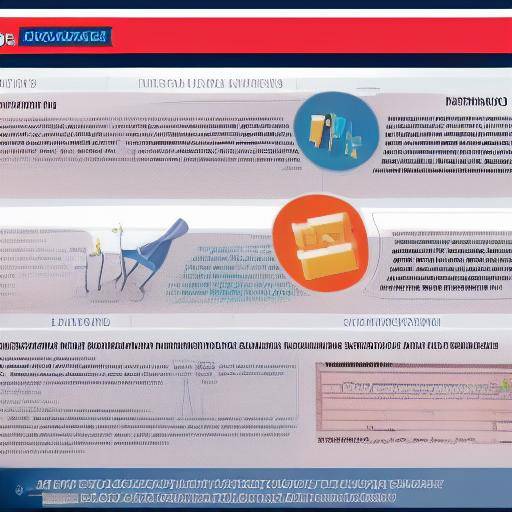
Introduction
The retirement planning process is crucial to ensuring financial security at the post-working stage. However, a common mistake is not to properly diversify investments, which may result in unnecessary risks and significant losses. In this article, we will explore fundamental strategies to avoid making mistakes by not diversifying retirement investments. We will analyse the importance of security, growth and planning, providing practical advice, expert perspectives, real case studies and future predictions in the area of retirement investments.
Retirement Investment Safety
Security is a key aspect in planning retirement investments. Ensuring the protection of invested capital and generating predictable performance is essential to maintaining financial stability during retirement. Some key strategies to ensure security in retirement investments include prudent asset diversification, consideration of protection against inflation and evaluation of the solidity of financial entities where funds are invested. Security also involves minimizing capital loss risks and ensuring a sustainable income flow during retirement.
Sustainable Growth in Retirement Investment
The growth of retirement investments is another crucial aspect that requires strategic planning. Looking for solid growth opportunities over time is essential to counteract the impact of inflation and maximize the wealth accumulation potential. Diversified investment strategies that include assets with long-term growth potential, such as firm stocks, corporate bonds and investment funds, can provide a balance between security and sustainable growth.
Comprehensive Retirement Planning
Comprehensive retirement planning is the final component in the successful management of retirement investments. This implies a comprehensive assessment of future financial needs, realistic investment targets, fiscal implications, and anticipating possible long-term scenarios. Planning should also address retirement strategies, such as the gradual decline in risk exposure as retirement, geographical diversification of investments and the efficient management of capital gain tax.
Practical Tips and Recommendations
- Intelligent Diversification: Do not place all eggs in one basket. Distribute your investments in different types of assets and geographical regions to mitigate risk.
- See Professionals: Seek financial and investment advice from qualified professionals to develop customized diversification strategies.
- Avoid Excessive Speculation: Avoid high-risk speculative strategies that can compromise the security of your long-term investments.
- Rebalance Newspaper: Review your portfolio regularly and make adjustments to maintain diversification and balance between security and growth.
Perspectives of Future Experts and Trends
Experts ' perspectives in the field of retirement investments highlight the importance of adapting to a changing economic environment and the need to adopt innovative approaches to maximizing security and growth. Future trends indicate greater emphasis on the integration of sustainable investment strategies and the incorporation of disruptive technologies in the management of retirement portfolios.
Conclusions and FAQs
In conclusion, the intelligent diversification of retirement investments is essential to ensuring long-term financial security. By combining security, growth and comprehensive planning, investors can mitigate risks and maximize the growth potential of their retirement portfolios.
Frequently Asked Questions about Retirement Investments
- **Why is it important to diversify retirement investments?**Diversifying retirement investments is crucial for mitigating risk and taking advantage of various growth opportunities in a changing economic environment. By distributing your assets in different kinds of financial instruments and geographies, you can reduce exposure to specific risks and improve the long-term performance potential.
- **How can I assess the safety of my retirement investments?**Assessing the security of your retirement investments involves analyzing the solidity and reputation of financial entities where you have invested funds, as well as considering asset diversification and protection against inflation. Consultation with financial advisers and managing their portfolio actively can help to maintain the security of their investments.
- **What are the best growth strategies for retirement investments?**The best growth strategies for retirement investments often involve a combination of assets that offer long-term growth potential, such as strong business shares, corporate bonds, diversified investment funds and, in some cases, alternative investments. Diversification and active management are key to fostering sustainable growth.
- **How can I effectively plan my retirement investments?**Effective planning of retirement investments requires understanding their long-term financial goals, assessing their income-flow needs during retirement, and considering strategies to protect against market volatility and inflation. Finding professional advice and reviewing your retirement plan regularly are critical steps for effective planning.
- **What is the impact of diversification on risk management on retirement investments?**Diversification plays a key role in risk management in retirement investments by reducing exposure to specific risks from sectors, individual assets or geographical regions. This approach can help ease portfolio volatility and minimize the impact of adverse events on a specific market area.
- **What are the emerging trends in retirement investment strategies?**Emerging trends in retirement investment strategies include a growing approach to sustainable investment, consideration of ESG factors (environmental, social and governance), and integration of digital technologies for the efficient management of retirement portfolios. These trends reflect greater awareness of the importance of sustainability and innovation in the area of retirement investments.
Conclusion
In short, careful diversification, the focus on security, sustainable growth development and comprehensive planning are essential to avoiding errors in retirement investments. In understanding the importance of security, the balance between security and growth, and strategic planning, investors can move towards a financially safe and comfortable retirement. Constantly assessing investments, adapting to new trends and seeking professional advice are key steps to ensure long-term success in managing retirement investments.






















































